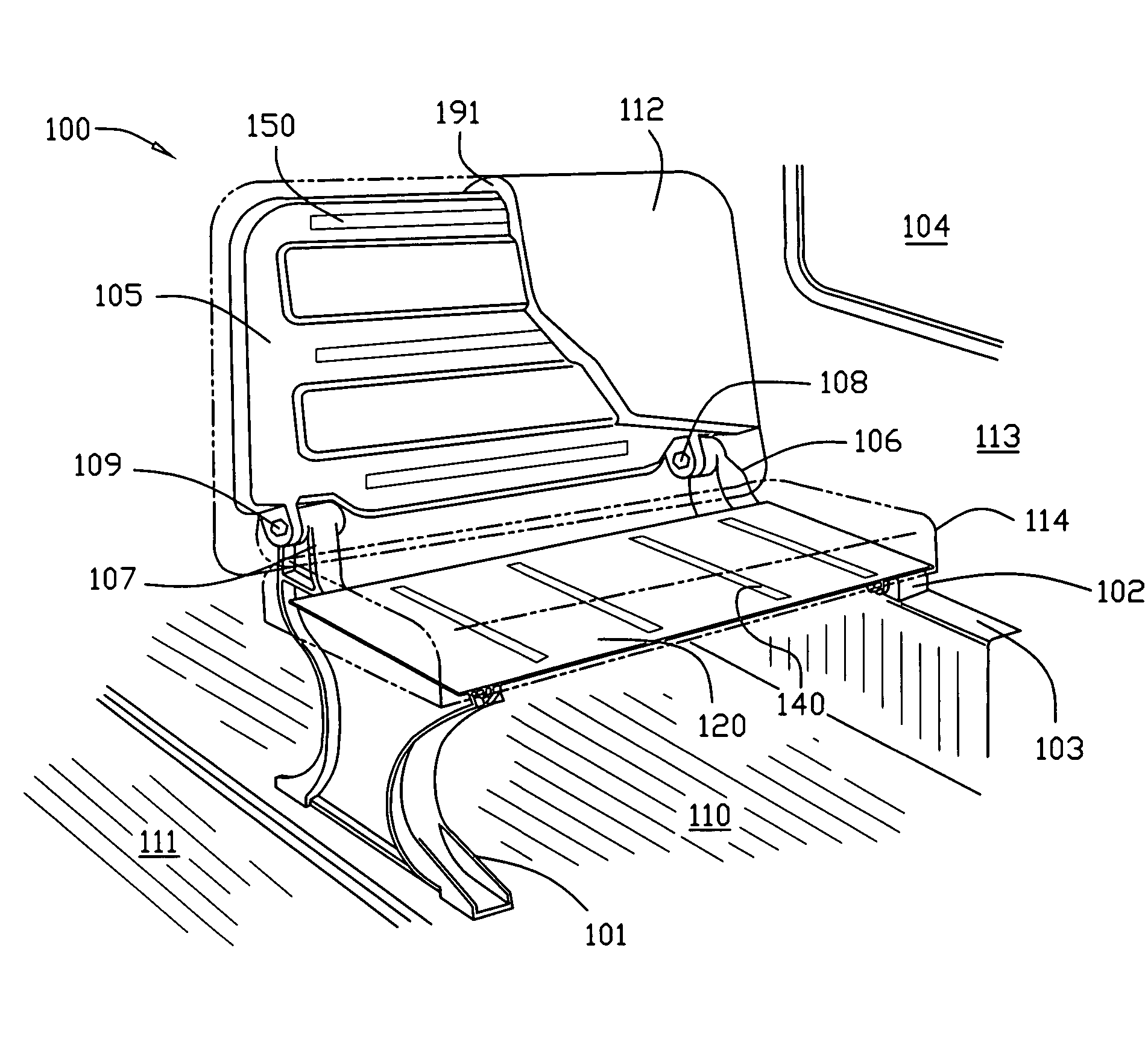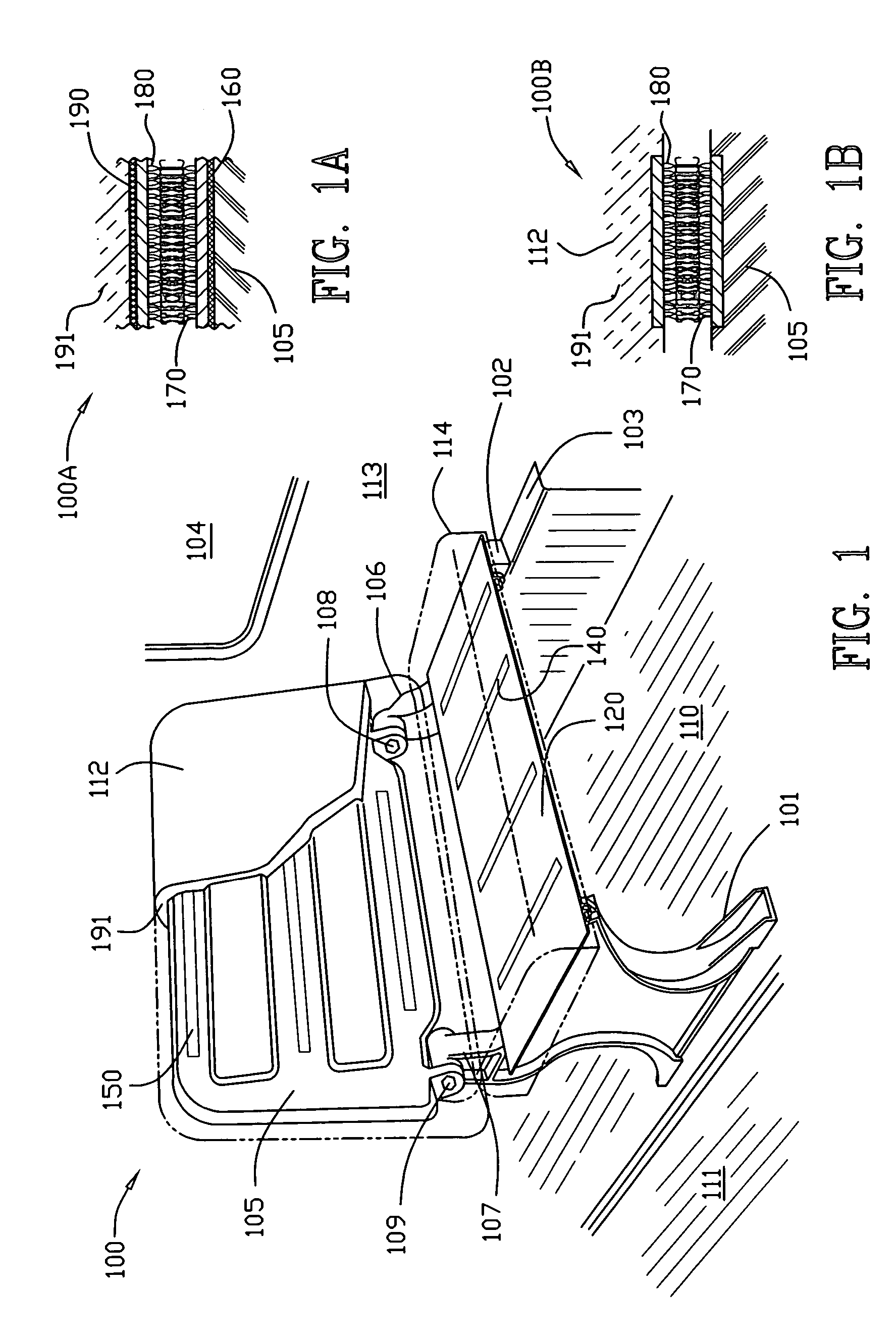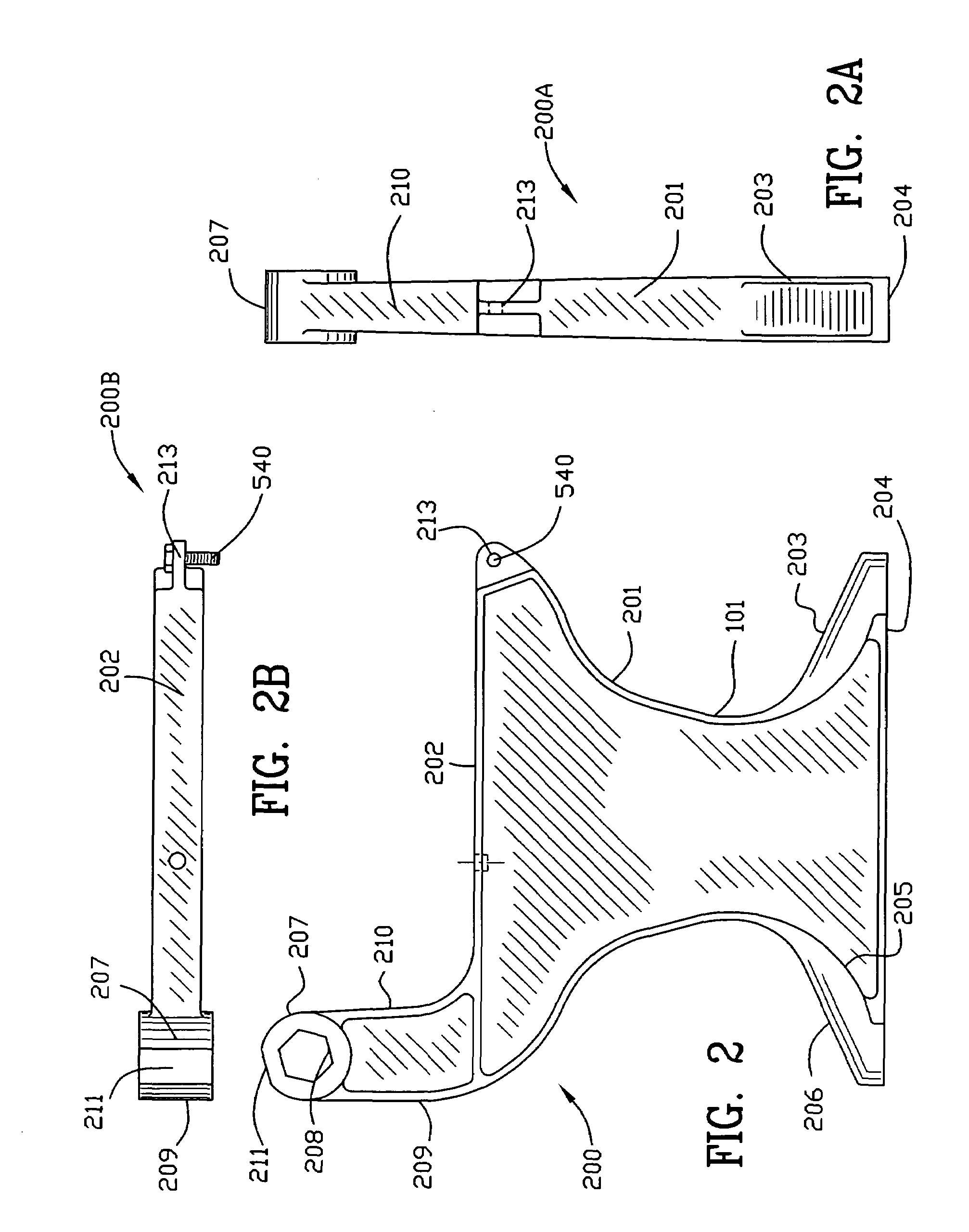School bus seat with energy absorber
a technology for bus seats and energy absorbers, applied in the direction of chairs, pedestrian/occupant safety arrangements, vehicular safety arrangements, etc., can solve the problems of knit lines not integrating fibers with polymeric materials, covering and foam are subject to wear and tear, etc., to reduce the probability of knit lines, the effect of improving flowability
- Summary
- Abstract
- Description
- Claims
- Application Information
AI Technical Summary
Benefits of technology
Problems solved by technology
Method used
Image
Examples
Embodiment Construction
[0056]FIG. 1 is a perspective view 100 of the front of the bus seat positioned in a bus. Aisle 111 and bus window 104 are illustrated in FIG. 1. Seat base or support 120 is hingedly affixed to aisle leg or support 101 and window leg or support 102. The floor beneath the bus seat is denoted by reference numeral 110, the side of the bus is denoted by reference numeral 113, and the window side rail 103 sits beneath support 102.
[0057]Aisle support 101 includes a fastener portion 107 which is fastened to seat back 105 by hexagonally shaped pin 109. Window side support 102 includes a fastener portion 106 which is fastened to seat back 105 by hexagonally shaped pin 108. Aisle support 101 is affixed to the floor and window support 102 is affixed to the window side rail 103. Preferably the supports are thermoplastic materials (or plastic composite materials) which are fastened to the floor with staple items of commerce such as nuts and bolts. Preferably the seat 120 and seat back 105 are the...
PUM
 Login to View More
Login to View More Abstract
Description
Claims
Application Information
 Login to View More
Login to View More - R&D
- Intellectual Property
- Life Sciences
- Materials
- Tech Scout
- Unparalleled Data Quality
- Higher Quality Content
- 60% Fewer Hallucinations
Browse by: Latest US Patents, China's latest patents, Technical Efficacy Thesaurus, Application Domain, Technology Topic, Popular Technical Reports.
© 2025 PatSnap. All rights reserved.Legal|Privacy policy|Modern Slavery Act Transparency Statement|Sitemap|About US| Contact US: help@patsnap.com



